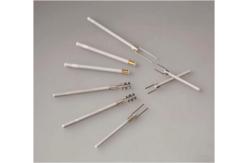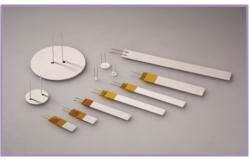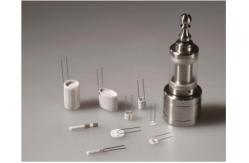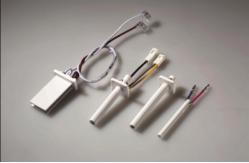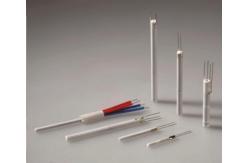Alumina Metallic Ceramic Heating Element HTCC Alumina Ceramic Heaters
|
Alumina metallic ceramic heating element (HTCC)Alumina Ceramic Heaters
Introduction: HTCC is an acronym for High-temperature co-fired ceramics; HTCC ceramic heating element is made up of high melting point metal heating material such as tungsten, molybdenum or molybdenum – manganese and 92-96% alumina ceramic substrates. The metal heating resistance slurry is printed onto the tape casting ceramic green body according to the design requirement, several layers of ceramic green body are then laminated together and is fired at 1500 ~ 1600 ℃ high temperature, with the aid of 4-8% sintering additive, to form the alumina ceramic heating element. This product features in corrosion-resistant, withstanding high temperature, long life cycle, energy efficient, uniform surface temperature, excellent thermal conductivity and thermal compensation rate. Alumina ceramic heating element doesn’t contain harmful substances such like: lead, cadmium, mercury, hexavalent chromium, polybrominated biphenyls, polybrominated diphenyl ethers, etc., and is in compliance with EU RoHS and other environmental requirements.
Background information With the advent of the integration of electronic components, electronic devices have posed higher demands on circuit miniaturization, high-density, multi-function, high reliability, high speed and large power. Co-fired multi-layer ceramic substrate meets all these requirements so it has been used in a wide range of applications in recent years. Co-fired multi-layer ceramic substrate can be divided into high temperature co-fired ceramic (HTCC) substrate and low temperature co-fired multi-layer ceramic (LTCC) substrate. Compared to LTCC, high temperature co-fired ceramics (HTCC) has higher mechanical strength, higher wiring density, better chemical stability, higher thermal dissipation coefficient and lower cost and is widely used in the heating and packing applications requiring higher thermal stability performance, less high temperature volatile gases and better sealing. High temperature co-fired ceramic heating element is a good alternate of alloy wire and PTC ceramic heating element and component.
Features
Application
Technical parameters 5.1 Appearance:
5.2 Dimension tolerance:
5.3 Voltage range: DC / AC 5-220V Depending on the resistance value, alumina ceramic heating element can be used in a wide range of voltage from 5V DC to 220V AC.
5.4 Power density By optimizing the production formula, ceramic heating element generates the greatest possible power density, from 60W / cm2 in startup stage, to 25W / cm2 in normal use.
5.5 Leakage current <5mA Rated leakage current <5mA. When applying 1800V/3750V high voltage, leakage current is less than 0.5mA.
5.6 Thermal Shock The product can withstand thermal shock without cracking when it is heated to 150 ± 10 °C and is placed in water at 20 ℃.
5.7 Electric insulation When applying 4500V for 1 second, leak current <0.5mA
Material properties
|
||||||||||||||||||||||||||||||||||||||||||||||||||||||||
| Product Tags: Alumina Metallic Ceramic Heating Element Ceramic Heating Element HTCC HTCC Alumina Ceramic Heaters |
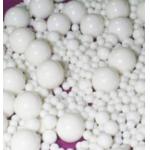
|
Wear Resistant Alumina Microspheres Long Lasting in Industrial Environments |

|
Precision Ceramic Parts Alumina Zirconia Aluminum Nitride |
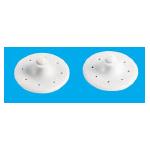
|
Customizable Gas Atomization Boron Nitride Ceramic Parts |
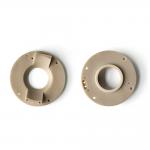
|
High Quality Aluminum Nitride AlN Parts for Superior Thermal Conductivity |

|
Gas Atomization Boron Nitride Ceramic Nozzles Amorphous Soft Magnetic Alloy Spray Tapes |
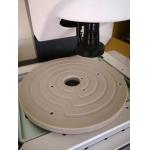
|
Pure BN99 Boron Nitride Ring Hot Pressed Aluminum Nitride Plate |

